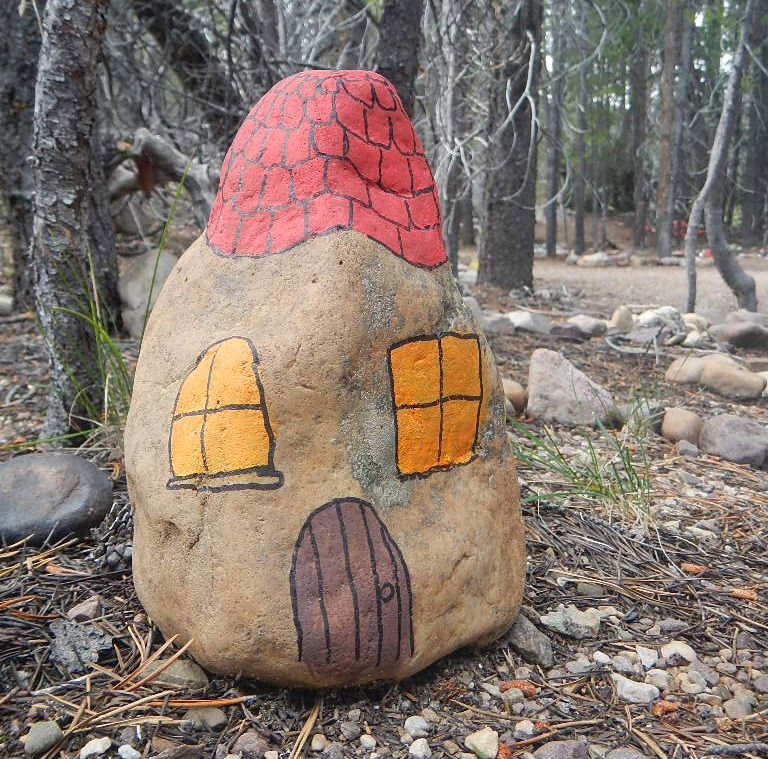

Tessa Zundel
As you start to plan next year’s vegetable and herb gardens, perhaps you’d like to create a special bit of garden fun for your children there. Fairy gardens are fun ways to add a bit of magic to your growing season and can be as simple or as elaborate as you wish.
You can create a potted fairy garden any number of ways, including in containers and raised beds. I don’t garden well in pots—I forget to water and otherwise pay attention to my container gardens—so when my children and I were thinking about creating fairy spaces in our yard, we created items that would fit well into a garden bed, tucked among the herbs or hidden in the elderberry bushes. We got their civil engineer father involved, and what started out as Popsicle-stick dwellings turned into beautiful wooden houses.
About that time, someone asked me if we’d ever been to “The Fairy Forest” in one of our rural areas. Intrigued by such a place, I began researching where this garden of delight might be. Nestled in the mountain community of Kamas, Utah, The Fairy Forest sprang up spontaneously and is now a place where people can go to add their own fairy dwelling or to simply walk among those already there. This place was inspiration overload for me and my kids, as lovers of children’s gardens.
Below are a few ideas we picked up there in the hopes that they will provide inspiration for your own fairy gardens. Your garden doesn’t need to be big to give your kids the gift of whimsy in the outdoors. The cool thing about fairy gardens is that any little thing can become magical without spending a fortune on it. Visit the craft store dollar bin and your local thrift store for simple materials like those listed below. Also, try attics, basements and the junk drawer, all of which are prime places to find fairy material.
Get Your Structures In Place
Glass beads, polished stones, aquarium rocks and glitter are excellent materials for making pathways, tables and windows.

Tessa Zundel

Tessa Zundel

Tessa Zundel
Add Embellishments
Other materials, like florist sprigs, plastic berries, dollhouse trinkets, ribbons and china, won’t last forever, of course, but they’re delightful while they’re in the garden. Sprigs and brightly colored bits of fabric can be placed anywhere in the designated fairy garden and are small enough that the children can move them around and re-decorate as they wish. Sometimes, if you look hard enough, you can find some of your loose ribbons tucked into real birds’ nests.

Tessa Zundel

Tessa Zundel

Tessa Zundel

Tessa Zundel
Retrofit Used Materials As Fairy Homes
Old bird houses can certainly be retrofitted for fairies and even gnomes, if they’re friendly. Fish bowls and tanks can become greenhouses and solariums where the magical folk can relax and grow their delicate plants. Even old pot shards can become places of repose for your fairy friends.

Tessa Zundel

Tessa Zundel
Keep It Simple
If you don’t feel like finding or building an actual fairy house, you can paint an obliging rock and create a whole village. The fairies will find their own way in so you needn’t worry about the solid nature of this kind of house. And you’re not limited to rocks—any rusty piece of farm metal will make a charming home, barber shop or hotel.

Tessa Zundel

Tessa Zundel

Tessa Zundel

Tessa Zundel

Tessa Zundel
Don’t Forget Signs
Be sure to name your houses, villages or glenn, and advertise that you’re a fairy-friendly place with other signs of welcome here and there.

Tessa Zundel

Tessa Zundel

Tessa Zundel

Tessa Zundel

Tessa Zundel
Celebrate Holidays
You may also decide you’d like holiday fairy gardens. How about a Christmas village?

Tessa Zundel

Tessa Zundel
Bottom line, this project doesn’t have to be expensive, expansive or fancy—just have some fun with your children in the garden any time of year.




